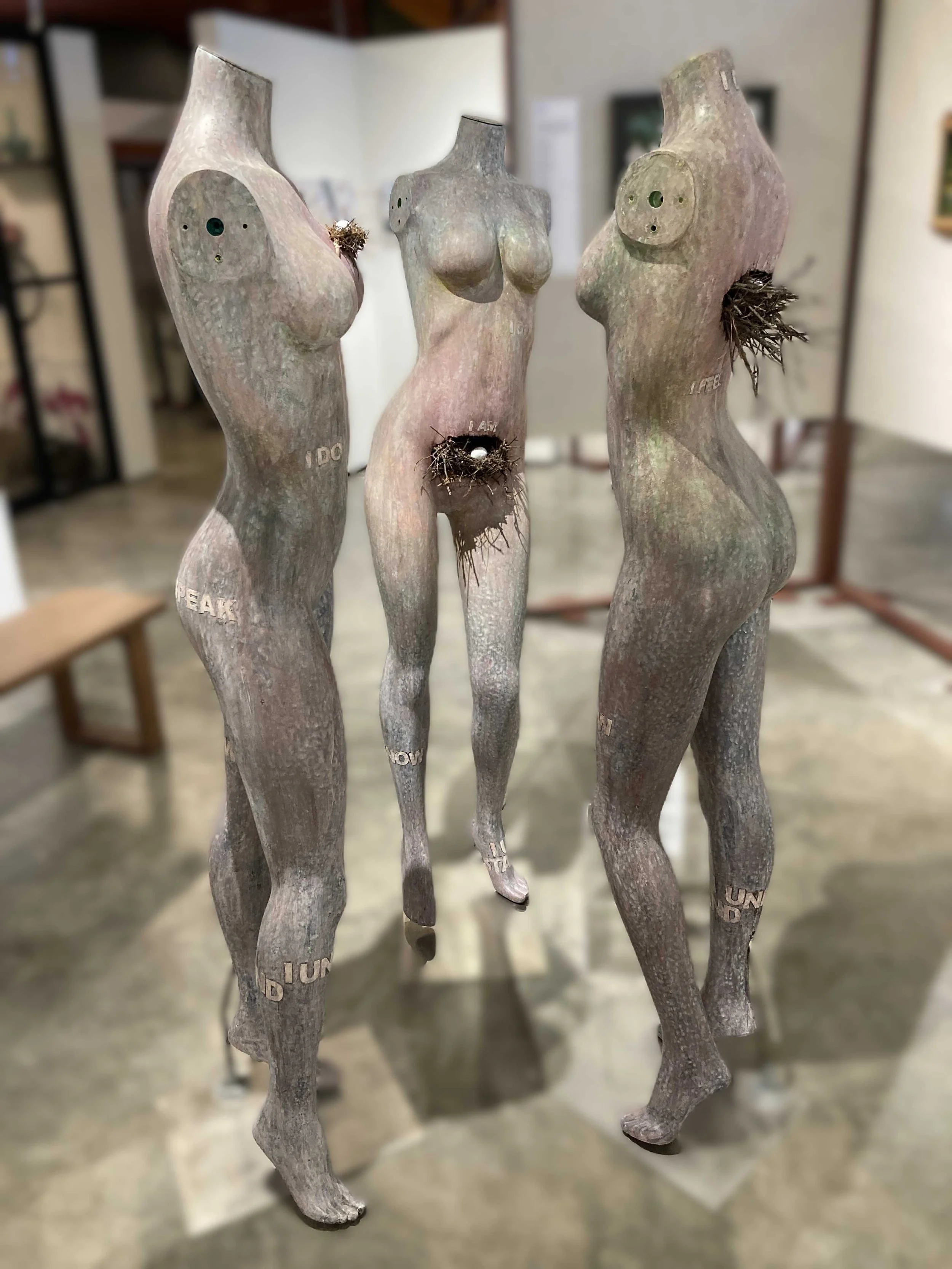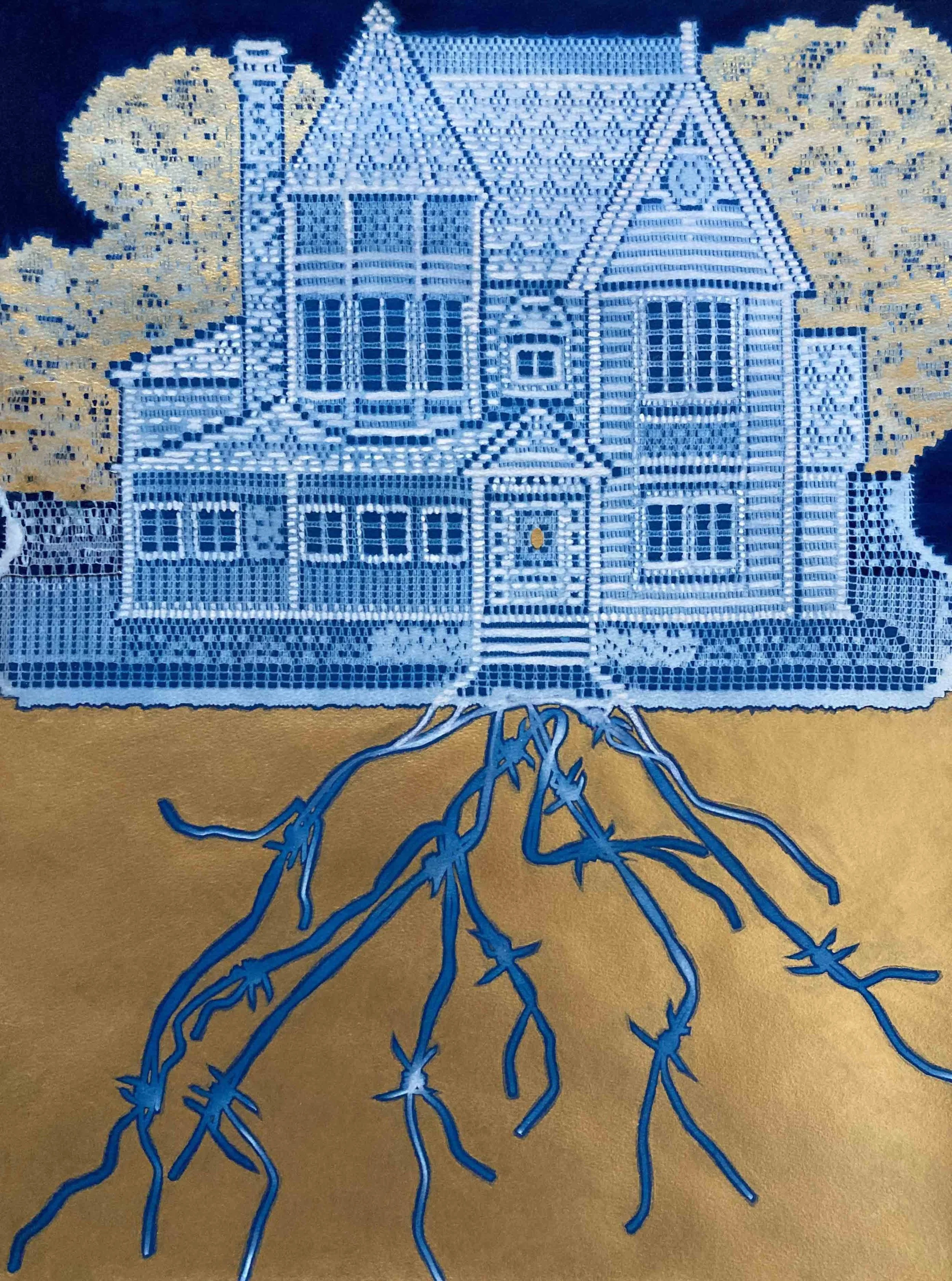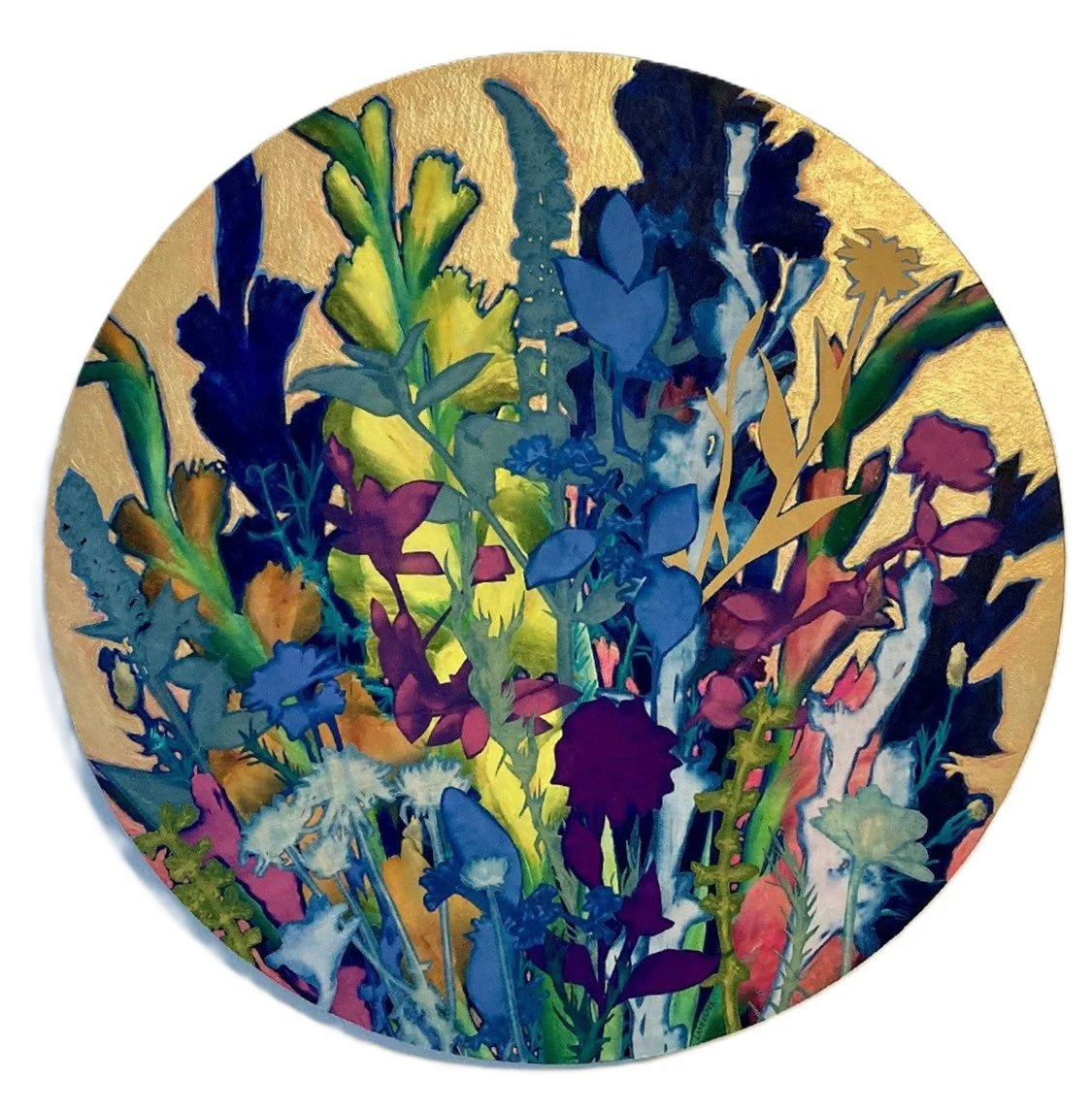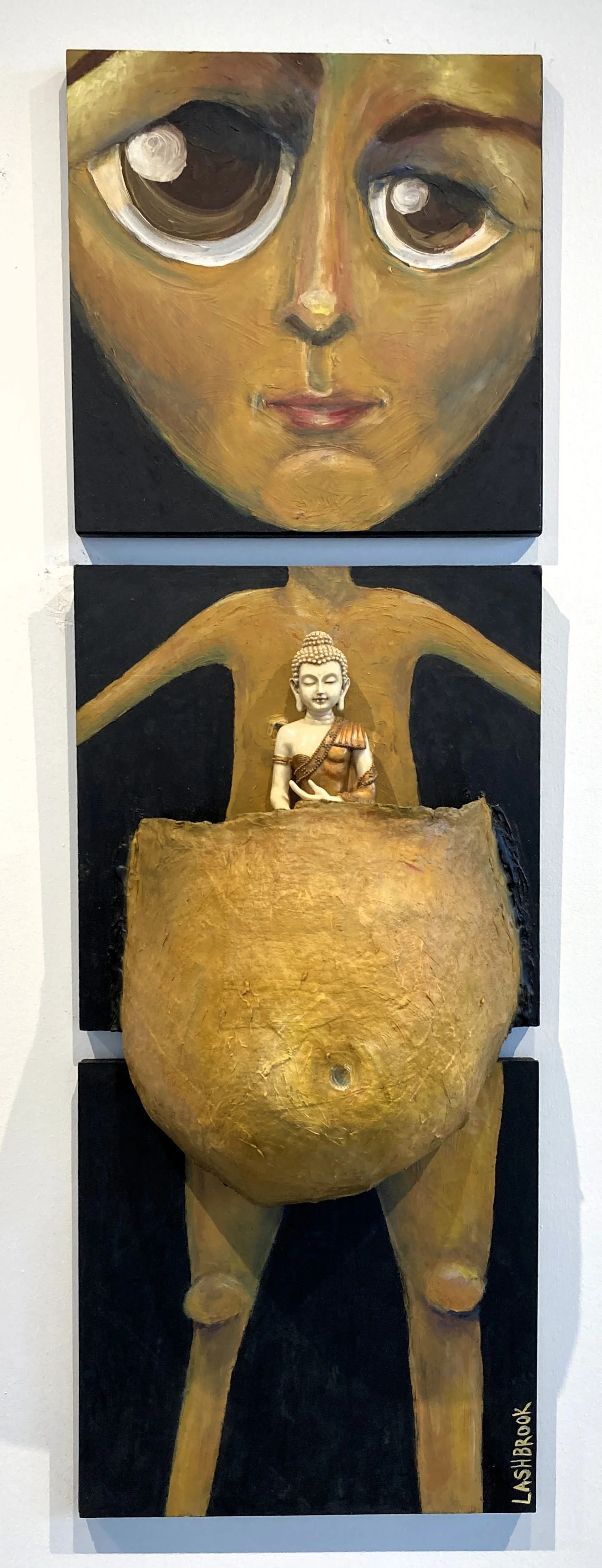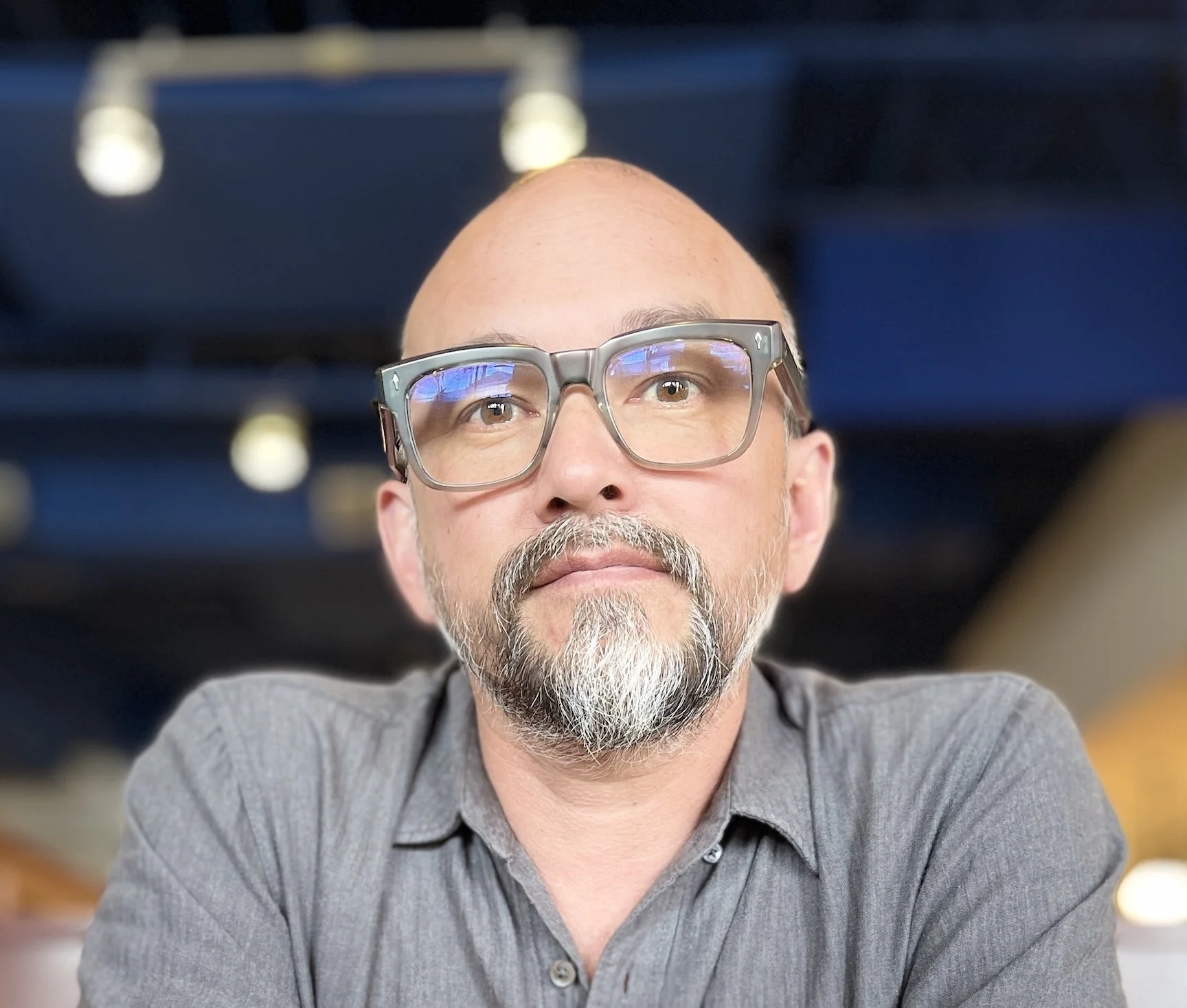Interview with artist Melissa "Mo" Lashbrook
Melissa “Mo” Lashbrook is a mixed media artist living in central Arkansas. She grew up in the Arkansas Delta where exploration and appreciation for what the land can offer now inspires her process-based art. Her works seek to celebrate the ordinary and forgotten by transforming them into renewed forms that suggest a new purpose. More of Mo’s work can be found at Central Arkansas Collective in Conway and at her website molashbrook.com.


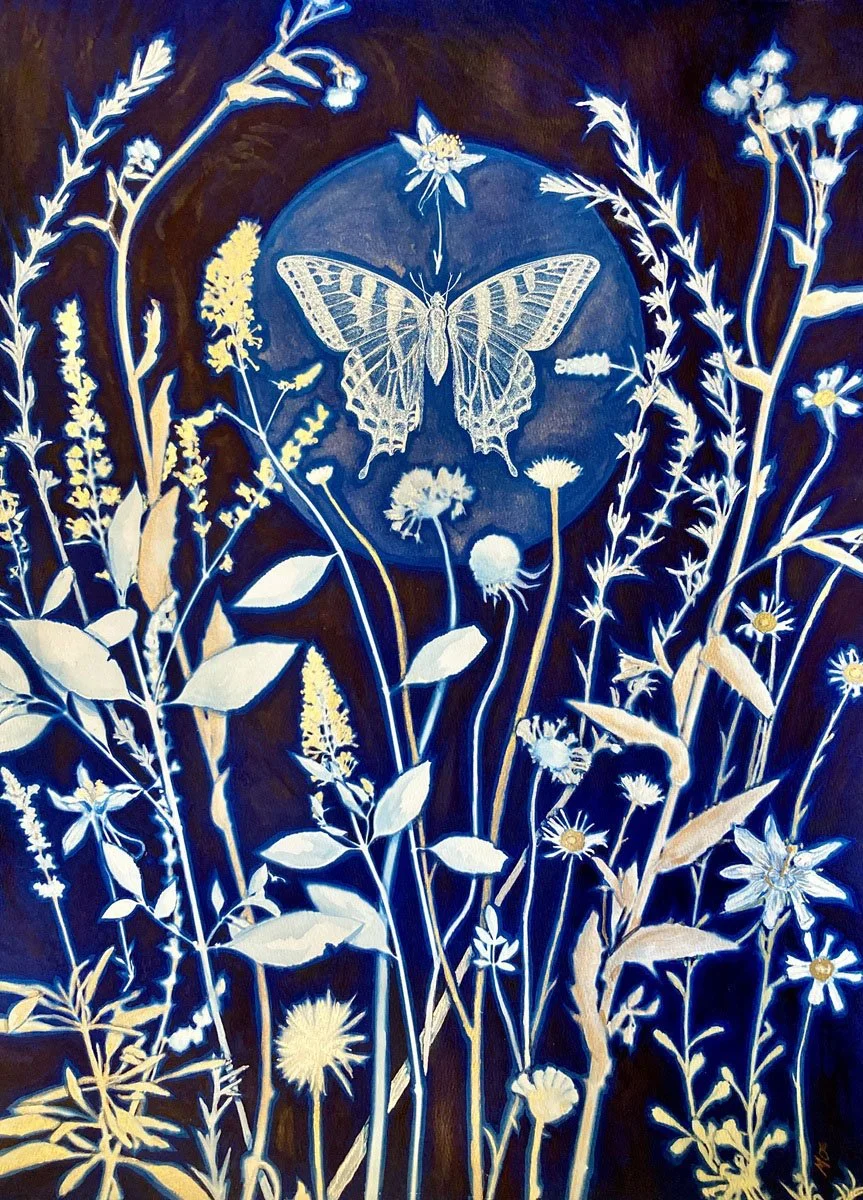

AAS: Melissa, are you an Arkansas native?
ML: Yes. I was born and raised here—part of my childhood was spent in the Plumerville bottoms, surrounded by animals and endless woods to explore. But most of my growing-up years were in the tiny, Mayberry-like town of Arkansas City in the Delta, which I consider my hometown. It was full of family and small-town charm.
After high school, I went straight to military boot camp, then to the University of Central Arkansas (UCA) in Conway. At first, I wasn’t sure what to study, but I eventually found my place in the fine arts program. I worked a variety of jobs while in school, earned my Bachelor of Arts in Fine Art, and then headed to military flight school.
I married my amazingly supportive and patient husband, became a Blackhawk pilot, and deployed to Iraq for over a year. After many years with the Arkansas National Guard, I had two incredible kids and decided it was time to shift paths. I returned to UCA for my Master of Arts in Teaching and taught elementary art in Cabot for many years before transitioning again—this time to focus on family, our hobby farm, and my art practice.
AAS: By the way, how did you get your nickname Mo?
ML: My mother was named after Nat King Cole’s song Mona Lisa. Growing up, I looked and acted so much like her that people called me Little Mona. Over time, that became Little Mo, and eventually just Mo. I carried that connection into my art business, Behind the Smile Art, using an embellished version of da Vinci’s Mona Lisa as my logo.
AAS: Did you have any artist role models growing up?
ML: Not formally. Budget cuts wiped out art classes the year I was supposed to take them in high school, so my first real introduction to “art” didn’t come until college. But creativity was always woven into my life. I always made things.
My dad’s an inventor at heart—always building or improving something. My mom has a gift for creating warm spaces and crocheting beautiful afghan blankets. They both worked resourcefully with whatever was on hand, and without realizing it, they became my first artistic role models. That resourcefulness still fuels my love of repurposing and giving discarded objects new life.
Today, I’m inspired by artists like Do Ho Suh, whose immersive sculptures create a sense of place, and Nick Cave, who transforms found materials into wearable art. I’m also drawn to the Japanese wabi-sabi aesthetic—finding beauty in imperfection and impermanence.
AAS: You use cyanotype as a medium often in your work together with other media. I especially like that. In End is Beginning, at first glance cyanotype contributes maybe only splashes of color, but then you see the specific elements that are captured in that unique way and incorporated into the themed work. I really like it.
End is Beginning, cyanotype, acrylic, and watercolor on paper, 17” x 21”
ML: Thank you—I love that you noticed those details. I discovered cyanotype while researching for another piece after my grandmother passed away. Part of my grieving process was finishing her quilt projects in my own way. While working with her textiles, I noticed the patterns echoed plants in my garden. I wanted to connect her florals from the past to my flowers from the present. That search led me to cyanotype, and I fell in love. Even now, it still feels magical—an alchemy of sunlight, chemistry, and time.
End is Beginning started during last year’s eclipse craze. I began with a single circle—a crystal bowl—and built outward, adding snakeskin, pressed plant branches, digital moth transparencies, and salt crystals, each reacting to the others. Cyanotype is often my foundation, layered with mixed media in a slow, intuitive process. I create small components that assemble into a larger whole—like life, layered and interdependent, balancing science and art, control and surrender. The ouroboros is an ancient symbol of a snake eating its tail, which has appeared in many mythologies and religions. It represents the cyclical nature of time and the idea of rebirth and renewal.
AAS: In Family Patchwork, cyanotype is used with different substrates to produce a wonderful dept of image. Tell me about it.
Family Patchwork, cyanotype, baby blanket, clothing on quilt, 79” x 66.5”
ML: This piece celebrates generational connections to the land. My paternal grandparents owned a small cotton farm, and the base is a quilt my grandmother pieced from clothing scraps and small batts of cotton from their farm. Time had worn it thin in places, so I set out to preserve it.
Though no longer useful in a traditional sense, the quilt has new purpose as a living work of art. Patchwork images of my father and son are encircled by cotton blossoms, perched on tools. The patches were created with digital transparencies and cyanotype. Like the original quilt, I used clothing, baby blankets, and cotton fabric for the repairs, hand-stitched together adding strength. The colors and patterns of the fabric combined with the cyanotype adds subtle shifts in hue and texture. This piece is a living work, meant to evolve over time and connect strands of the past to the present. It shows how each generation attaches their own layer to the family structure.
“My process is part transformation, part preservation—making something overlooked feel alive again. Growing up gardening and exploring the woods taught me that nothing is ever truly finished; it just changes form.”
AAS: Your work seems very tied to nature. Has that always been the case?
ML: Almost always. Even when I’ve thought my work was going in different directions, a closer look brings me back to Mother Nature – and this pull to the interconnectedness of all living things and the cyclical nature of life, death, and rebirth. I find comfort and beauty in that.
Aesthetically, I’m drawn to the organic and imperfect, with colors often rooted in nature—the deep blue of cyanotype chemical reactions, the warmth of sun-aged materials, and the luster of earthly metals. The materials with a history—things that have been touched, weathered, or discarded. I collect abandoned objects, fibers, and plant matter, pairing them with botanicals I’ve grown or foraged. Natural materials carry their own textures, patterns, and imperfections—they already tell a story before I touch them. My process is part transformation, part preservation—making something overlooked feel alive again. Growing up gardening and exploring the woods taught me that nothing is ever truly finished; it just changes form.
“The tactile nature of my process–the feel of materials, the movements, the changing workspaces–feeds me.”
AAS: And looking at your work, I get the sense that you enjoy the physical aspects of creating as much as the mental and technical aspects. Is that a fair assumption?
ML: Absolutely. I love the thinking, but I need the doing. The tactile nature of my process—the feel of materials, the movements, the changing workspaces—feeds me. Growing seeds, gathering plants, pressing, arranging, experimenting, embellishing… it’s all part of the rhythm.
I consider myself a controlled process-based artist—someone who guides the work with intention but leaves space for surprise. Texture is everything: the look, the feel, the sense that something has been touched and lived with. That quality always draws me back to nature.
AAS: Journey #2 is a fun piece and thought provoking. The first thing that popped into my head was that life can feel like being a rat in a maze. How did the idea for that piece come together?
Journey #2, ceramic, acrylic, wax, upcycled birdhouse, mannequin, wood, 69” x 36” x 36”
ML: Life often does feel that way. This piece began when I pulled a discarded birdhouse from the bottom of Lake Norell. I paired it with mannequin legs and wax-coated ceramic figures I sculpted from clay—a natural material often found in lakes. A birdhouse is meant to help birds survive; here, it becomes a safe space for navigating life’s challenges. The mannequin legs suggest that this journey happens within oneself.
The birdhouse became a metaphor for self-transcendence—overcoming one’s own limits. Each “floor” represents a stage in the self-transcendence hierarchy, from basic needs at the bottom to self-actualization at the top. Figures on each level depict examples of that stage: food, shelter, and protection; love and belonging through family and work; cognitive and aesthetic needs through gestures of knowledge, meaning, and balance; and finally, self-actualization and transcendence through acts of helping others and prayer.
Journey #2 is a visual map of inner growth—of the struggles, work, and transformation that happen inside us. Reviving the birdhouse also reflects my wabi-sabi approach: finding beauty in the broken and giving discarded things new life.
AAS: Tea Party is quite an extraordinary work. What is the story behind it?
Tea Party, tea, teabags, coffee, acrylic, stain, paper, upcycled cups on board, 42.5” x 61” x 3”
ML: Thank you. Tea Party started while I was reading Alice’s Adventures in Wonderland, and I was struck by the layers of insight hidden in the “madness” of the tea party scene and then that made me think about other “tea parties”—historical, political, and cultural. The phrases inside the tea bags come from all those sources, jumbled together. The piece balances order and chaos-order from afar, chaos up close as viewers read the phrases inserted into each bag.
Every element holds meaning: the number of tea bags reflects Boston Tea Party estimates; the “stars” are tea tags, one for each state plus one for growth; the five teacups, coated in tea granules, symbolize the Intolerable Acts; and the flag itself is stained with both tea and coffee, nodding to America’s blended rituals. And so on. It is a reimagined American flag made by layering narratives from history, politics, and culture.
AAS: Thank you for your service in the military. I’m wondering if you think your life experiences – military pilot, educator, now farmer – have helped shape your art practice?
ML: My life is like my materials—varied and adaptable. The military taught me persistence, confidence, and how to work creatively within limits. Teaching reminded me of the joy in making for its own sake.
I’ve always created, even while deployed—often from scraps I could find. That built my habit of making small components to later assemble into something larger. Teaching also made me think more about my audience and see the world with more optimism—kids bring such joy to art. Lately, farm life has brought even more natural materials into my work.
AAS: Tell me about your involvement in the arts in Cabot and Conway and in helping to grow the arts community in that region of the state
ML: I spent three years with the Cabot Foundation for Arts & Culture (CFAC), founded by Becky Williams and John Rudd. We launched projects like the Cabot Art Walk, Firehouse Film Festival, and Business+Art Gallery. Even though CFAC is no longer active, its vision for downtown Cabot is coming to life with new murals, businesses, and markets. It’s rewarding to know I was a part of that.
In Conway, my artist friend Jeanetta Darley got me involved with the Conway Art Walk, which led to the Central Arkansas Collective. The Collective is a group of professional artists dedicated to creating art that sparks dialogue and fosters community. We recently transformed part of The Studio Downtown into a museum-quality gallery thanks to a donation from the Adcock Family Foundation. The Studio Downtown is a co-working space that is used by Blackbird Arts Collective and Create Conway (who hosts the Conway Art Walk). So, there are all these organizations working to promote arts and culture in different ways, and we get to be in the mix.
I serve on the gallery’s curation team, learning from Barbara Satterfield (which I consider a huge honor-she was one of my professors in college). Coming back to where I first studied art, and now seeing these opportunities grow, feels like coming full circle. I am extremely grateful.
AAS: What can we expect from you next, Mo?
ML: Now that I have a regular gallery space, I’m returning to large mixed-media pieces and experimenting with more materials from my farm. I really want to incorporate more sensory experiences for viewers. I’ll have new work every month as part of Central Arkansas Collective. Gallery openings are in conjunction with the Conway Art Walk (first Fridays 5pm-8pm). It’s also open to the public Monday-Friday 9am to 5pm and Saturday 10am to 4pm.
I’m honored to be one of 34 juried artists in the inaugural Art Market at the Arkansas Museum of Fine Arts, September 6–7, 2025. The market will span throughout the museum allowing guests to explore each artist’s booth and purchase one-of-a-kind works of art. So come see me!
My embellished botanical work is also available at the AMFA Store, South Main Creative in SoMa, Batesville Area Arts Council, and the Botanical Gardens in Little Rock.
